10 steps to protect your grow and solve problems
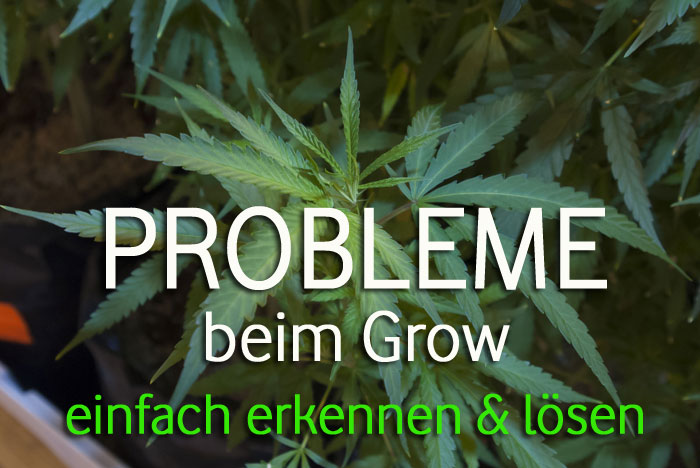
Here is a short step-by-step guide to solving many grow problems.
Step 1:
Examine your plant and see if there is any evidence of insects or other diseases. If you find any pests or fungal diseases, use these tips to control them. Ideally, pest infestations should be prevented beforehand and, if present, controlled with the correct use of biological insecticides.
Make sure that your pest problem is not a deficiency and vice versa, try to find out if there are insects on the plant, often they are on the underside of the leaves. A magnifying glass can be helpful here. It may be that a deficiency symptom on the cannabis plant looks the same as a pest infestation. One is not always so easy to distinguish from the other, because both can produce similar symptoms. For example, wizened leaves can be caused by insects sucking plant sap from the leaves, or they can be caused by a deficiency.
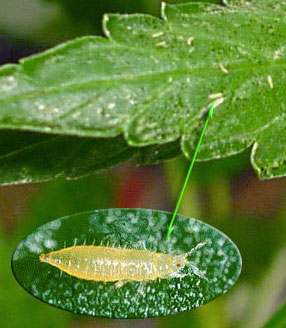
Nutrient problems damage cannabis plants in a more steady, consistent way and less sporadically than a pest infestation. Nutrient problems tend to show up in a more linear fashion, either the lower leaves are affected and the change moves upwards or the upper leaves are noticeable.
A deficiency is therefore more regular and affects the whole plant, unless a pest infestation could spread over the whole plant. Therefore, it is extremely important for every grower to check the cannabis plants regularly in order to detect possible problems, changes and abnormalities at an early stage. If a problem or disease is left untreated, it will become increasingly difficult to treat and detect.
In short, a pest infestation is more random and often concentrated in a specific area of the cannabis plant before spreading further. Nutrient deficiencies appear regular and symptoms move from the ground to the top or vice versa.
Step 2
If your plant is in the growing phase and the lower leaves are turning yellow and this is slowly moving up the plant without curling leaves, then this means you need more nitrogen. If your plant is in the flowering phase and shows slowed growth or yellow leaves and looks like it is dying, then more nitrogen is also needed. This can also cause the stems to become soft and pale. Normally, a nitrogen deficiency appears first on the older leaves. If it remains uncorrected, growth will be increasingly affected and the plant may eventually die.
If your plant is in the flowering phase and gets dark green/yellow leaves, a treatment with more phosphorus may be necessary. This type of deficiency results in reduced root growth. The stems often become weak and brittle. If a careful administration of more phosphorus does not do anything, go to the next step.
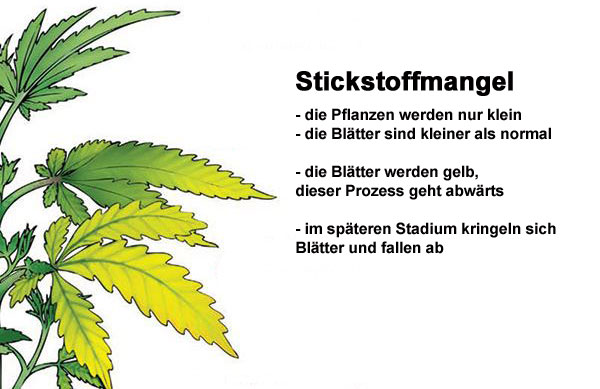
Step 3
If the leaves of the plant curl and turn and turn yellow, check whether light burn could possibly be the cause. Is the artificial light (NDL) at a sufficient distance from the top of the plant? Or maybe the air circulation in the grow room is not ideal. The symptoms usually show up in connection with heat stress. Here are some useful tips to prevent and treat heat stress in your plants.
If this is not the cause of the problems, consider adding more magnesium to the planting medium. Epsom salt is good for this. Prepare a mixture of ¼-1/3 teaspoon Epsom salt to 4L of water and water your plant with it.
Magnesium problems usually start on the older leaves and show signs of yellowing going outwards between the leaf veins. The leaves curl upwards. Necrosis on the leaves can also result from magnesium deficiency. Although a marijuana plant can mature with magnesium deficiency, this will still result in lower yields and results.
Step 4
If the tips of the leaves turn brown, then you have a potassium problem. This can be solved by giving more potassium to the plants.
Potassium problems can show up as red or purple stems, although this can also be genetic in some cannabis strains or caused by a cool growing environment. If the grow environment is too cool, there are a few things that should be done to remedy this.
Potassium problems usually appear first on the fresh and new leaves before moving to the older leaves. Potassium deficiency can also attack the stems and make them soft. In the advanced stage, the plant can also die from this.
Your problem is not solved? Then go on to the next step.
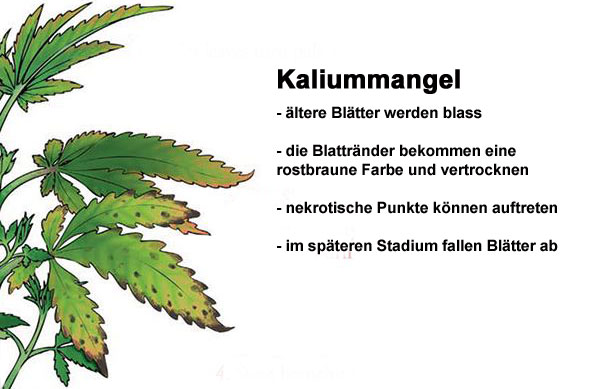
Step 5
Your cannabis plant looks wilted, the leaves are drooping? This could be either root rot or lack of water. These symptoms can also be accompanied by symptoms reminiscent of nutrient deficiencies. Root rot is a serious problem that we have more information about elsewhere.
If your problem is still not solved, check the planting medium. If the soil is too dry, firm or strawy, think about repotting and using high quality cannabis soil. This always makes sense anyway. Proper watering of cannabis plants is essential for their good development. You can read more about this here.
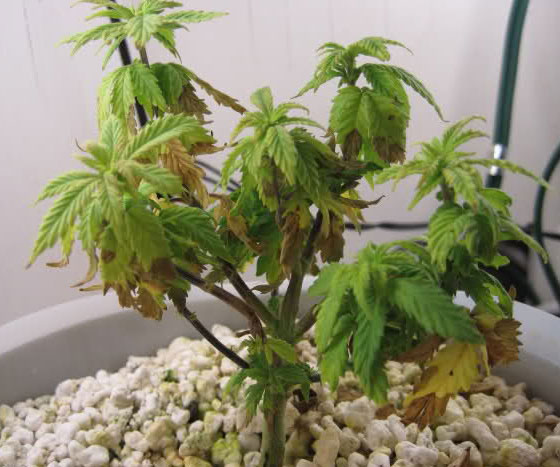
This cannabis plant is clearly affected by root rot.
That didn't solve your problem? Go to the next step...
Step 6
The leaf veins are green but the leaves are yellow? This is a sign of an iron problem. Iron problems generally occur on new parts of the plant. These can also become necrotic and die. The administration of iron can solve the problem. Iron is not essential for the survival of plants, but a deficiency will certainly result in below average harvests. Initially, iron deficiency does not cause curly leaves, but if necrosis progresses, the leaves may curl as a result.
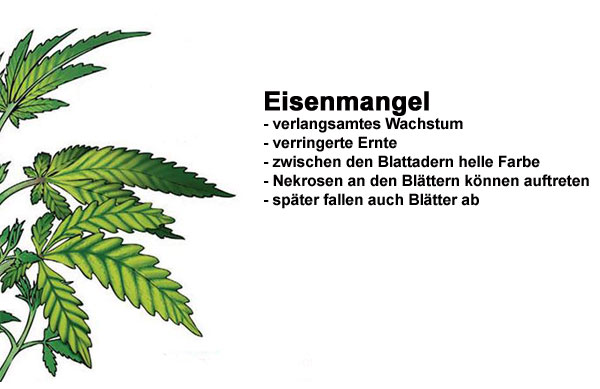
The problem is not yet solved? Go to the next step.
Step 7
The leaves turn yellow near the leaf vein, but they do not curl or curl up. Then a magnesium problem is likely. With extra magnesium for the cannabis plants, the problem can be solved. As magnesium deficiency progresses, the leaves may curl. Marijuana does not necessarily need magnesium for maturity, but a deficiency will certainly result in lower yields.
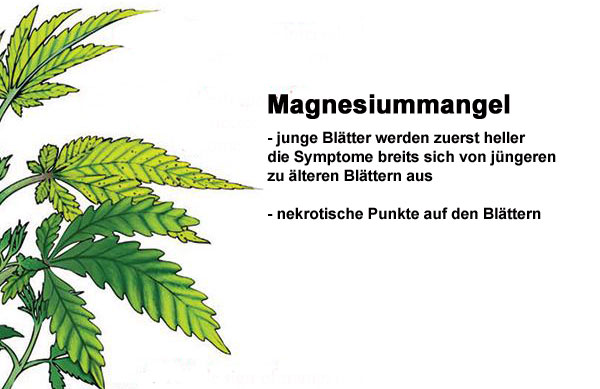
Your problem still exists? Then move on to the next step.
Step 8
If your problems are not solved, you should add more micronutrients or a formula of them to the soil. This can solve boron, zinc, calcium and molybdenum deficiencies. Micronutrient deficiencies are usually quite difficult to detect because they can vary from strain to strain.
If your problems are not yet solved, go to the 9th step.
Step 9
If your problem is still not solved at this point, give your plants a flush and rinse the planting medium. Use a suitable cannabis fertiliser, if you use anything else from the hardware store or the summer flowering stuff, put it far away and don't use it on the cannabis plants, only with the right fertiliser will they get what they really need. Marijuana plants are very picky, they will never be satisfied with a flower fertiliser from the hardware store and there are endless problems with it.
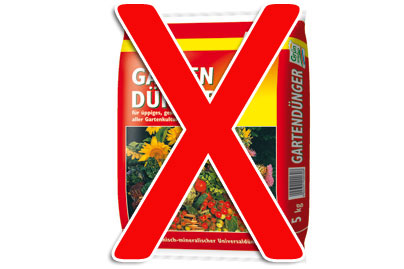
You have checked everything up to this point, are you using the correct dosage of cannabis fertiliser? Then go on to step 10.
Step 10
It may be that your plant has a nutrient blockage and cannot absorb nutrients as intended, resulting in deficiencies. This can happen for a variety of reasons: the cannabis plant cannot access the available nutrients or a whole group of them. This can be caused by a lack of a certain nutrient or by a chemical reaction in the planting medium. Toxic substances block the roots or some substances in the planting medium cause a chemical change in the other nutrients.
Normally this occurs very rarely, and only if something harmful that is not cannabis-friendly has gotten into the plant pot. (Prevent your pet from using plant pots as a new toilet, many cats like to do this and often unnoticed).
Keep in mind that plants that have been freshly repotted or cuttings that come into soil may initially droop their leaves and show signs of wilting. many fertilizers that can be used for other types of plants are unsuitable for cannabis plants and cause problems.
A nutrient blockage can only be solved by flushing. With Hydroponic, the entire nutrient tank must be replaced and a new nutrient solution prepared.
Expired fertilisers can also cause nutrient blockage. Root-bound occurs when the roots in the plant pot twist and twist a lot. If the roots develop to their maximum and have too little space in their plant pot, this can occur after some time and cause similar symptoms as a nutrient deficiency. The best thing is to plant the plant in a sufficiently larger pot so that the roots have more space again.
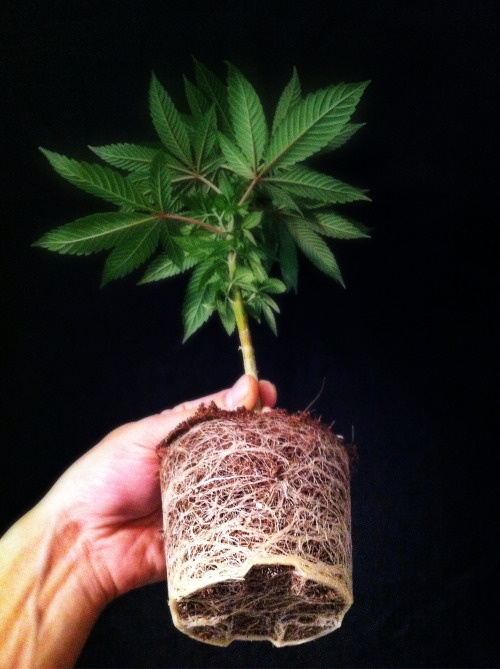
If the roots of your plant look like this, it should be repotted to prevent root-bound sooner or later.





